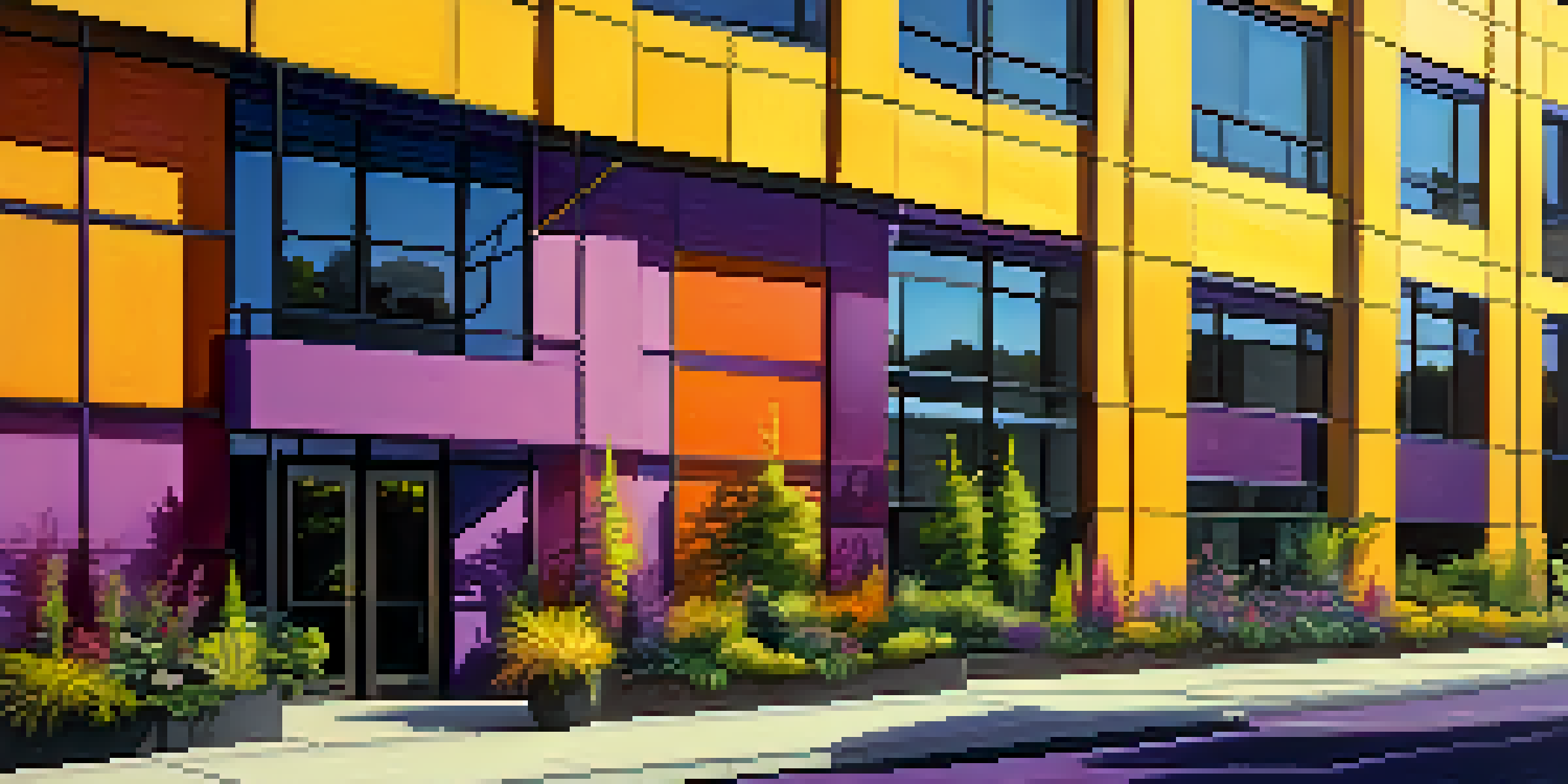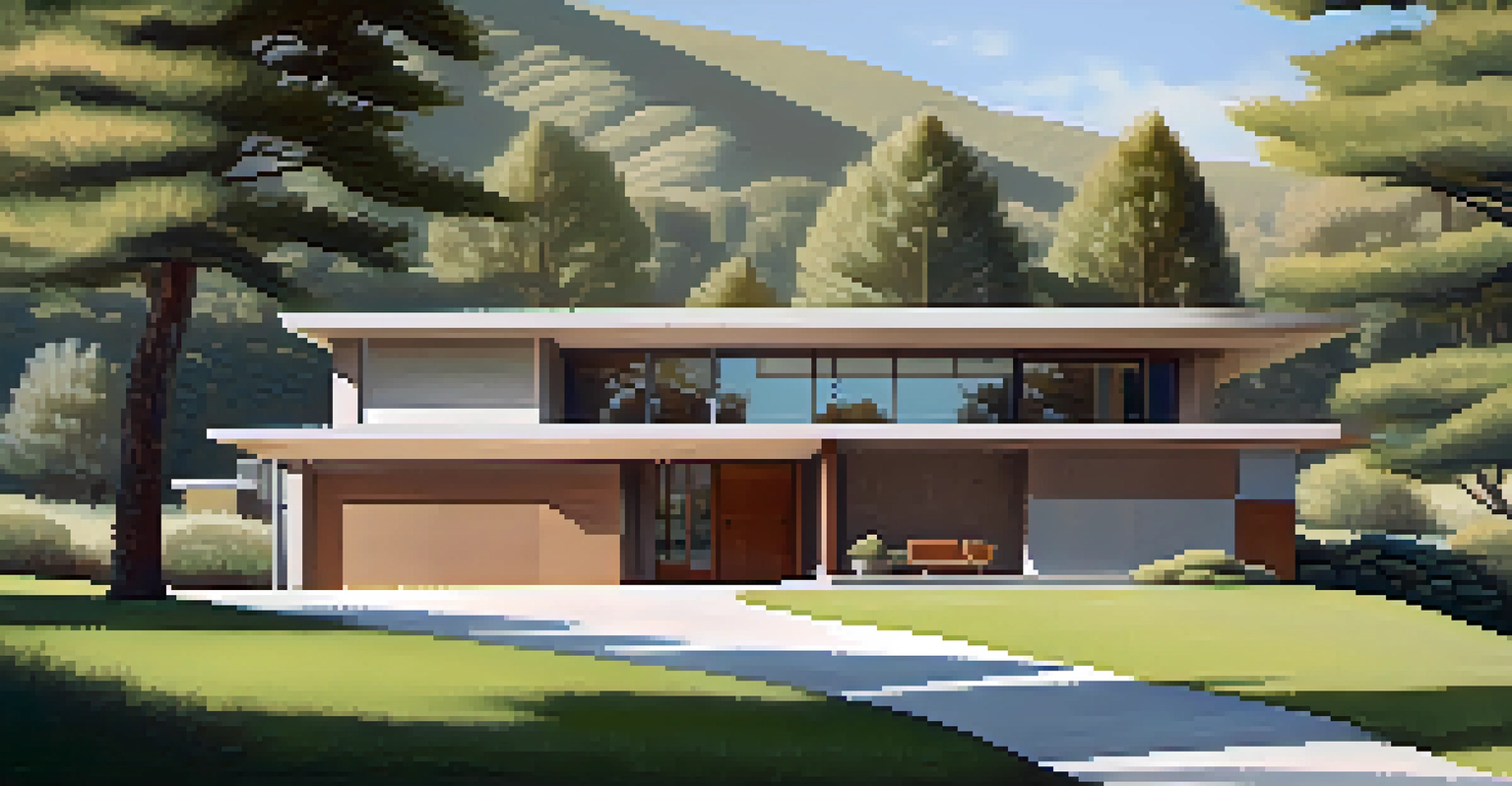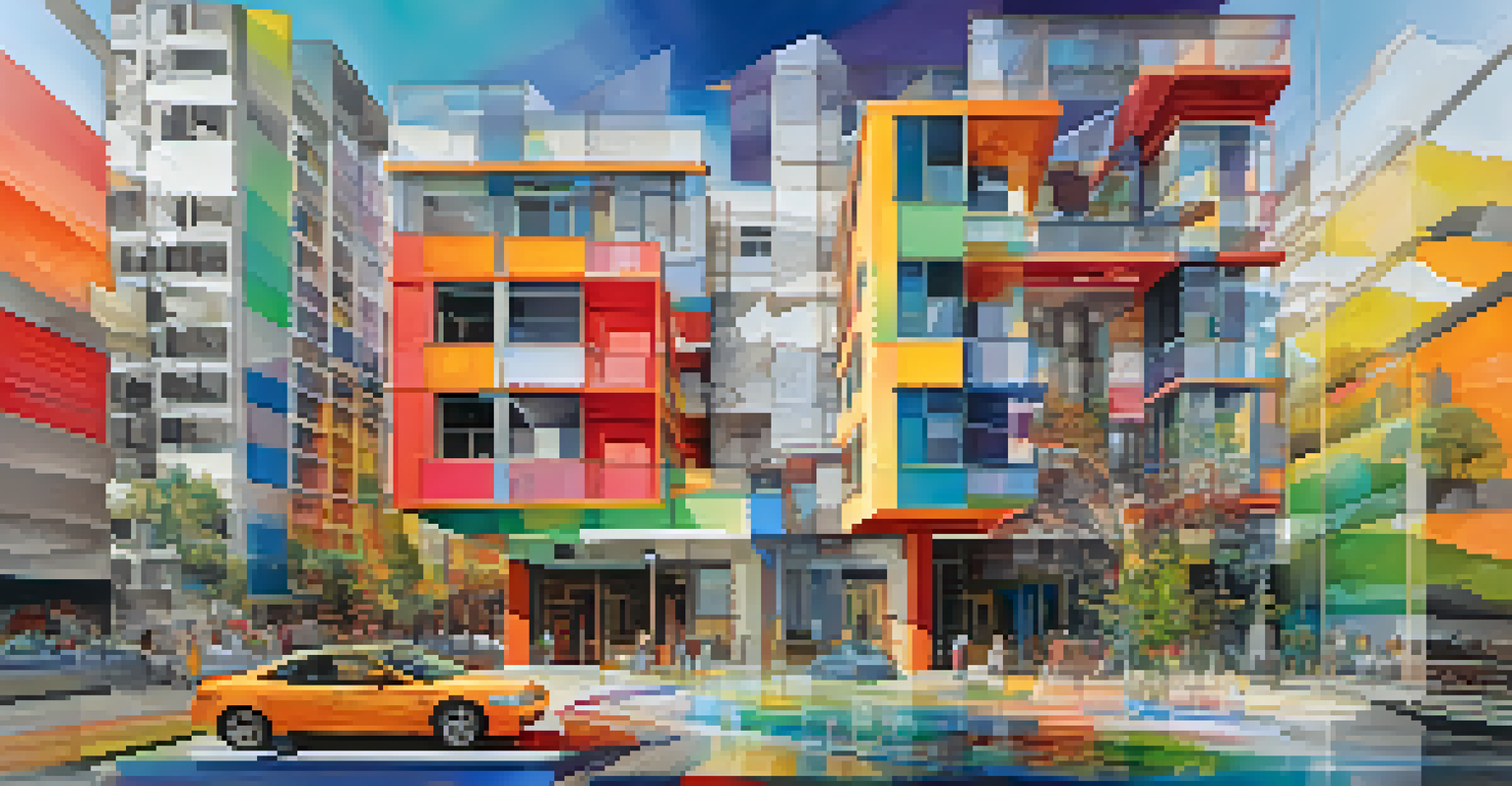Color Schemes in Architecture and Their Fashion Implications

Understanding the Role of Color in Architecture
Color plays a pivotal role in architecture, not just for aesthetics but also for evoking emotions. When you walk into a building, the colors surrounding you can create feelings of warmth, calm, or even excitement. This psychological effect is why architects pay close attention to their color choices, as they can significantly affect how a space is perceived and experienced.
Color is the keyboard, the eyes are the harmonies, the soul is the piano with many strings.
For example, a bright yellow facade might energize a community, while a soft blue might instill a sense of tranquility. These emotional cues can shape our reactions to the environment, influencing how we interact with a space. As such, understanding color becomes essential for architects aiming to create meaningful impacts.
Moreover, the cultural context of colors can vary widely; what is calming in one culture may be considered vibrant or even overwhelming in another. This complexity makes color selection an art form in itself, highlighting its importance in architectural design.
Color Theories and Their Application in Buildings
Architects often rely on color theory to guide their choices, using concepts like the color wheel to create harmonious combinations. For instance, complementary colors, which are opposite each other on the wheel, can create striking visual contrasts that draw attention to specific architectural features. By understanding these relationships, architects can enhance the visual dynamics of a building.

Additionally, monochromatic schemes, which use variations of a single color, can impart a feeling of sophistication and unity. A monochromatic approach can be seen in many modern designs, where subtle shifts in shade create depth without overwhelming the observer. This technique often resonates with fashion trends, where minimalism is celebrated.
Color Shapes Emotional Responses
Architects use color to evoke specific emotions, influencing how people perceive and interact with spaces.
Ultimately, applying these theories allows architects to craft spaces that are not only visually appealing but also align with the intended message or function of the building. It's this thoughtful application that forges a connection between architecture and the world of fashion.
Historical Color Trends in Architecture
Throughout history, architectural color trends have often mirrored the prevailing styles and cultural movements of the time. For instance, the vibrant colors of Art Deco buildings in the early 20th century reflect the exuberance and optimism of that era. These striking palettes not only defined the architecture of the time but also had a lasting influence on fashion, where bold patterns and colors became the norm.
Colors are the smiles of nature.
Similarly, the muted colors of mid-century modern architecture, characterized by earthy tones and pastels, emphasized a connection to nature and simplicity. This shift towards natural hues influenced fashion designers to adopt softer palettes and organic materials, resulting in a cohesive aesthetic that resonated across both disciplines.
By examining these historical trends, we can see how color in architecture has the power to set the tone for an entire era, influencing everything from interior design to the latest runway looks. This interplay between architecture and fashion reveals a fascinating dialogue that continues to evolve.
Modern Color Schemes and Their Influence
In contemporary architecture, color schemes have become increasingly experimental and bold, with architects pushing the boundaries of traditional palettes. Think of iconic buildings like the Guggenheim Museum in Bilbao, where vibrant colors clash and harmonize in an innovative way. This radical approach invites a sense of curiosity and adventure, encouraging a broader acceptance of color in everyday life.
This shift is mirrored in the fashion industry, where designers are now embracing bold colors and unconventional combinations. The rise of streetwear has particularly emphasized this trend, with bright colors and unique patterns becoming staples. This cross-pollination between architecture and fashion showcases how both fields can inspire and inform one another.
Historical Trends Reflect Culture
Architectural color trends mirror cultural movements, impacting both architecture and fashion throughout history.
As we move forward, this blend of creativity and experimentation will likely continue to shape our urban environments and wardrobes, leading to a future where color is celebrated in all its forms. The challenge will be to balance innovation with context, ensuring that the use of color enhances rather than overwhelms.
The Psychological Impact of Color in Design
Colors can evoke powerful psychological responses, influencing how we feel and behave in different spaces. Warm colors like red and orange can stimulate energy and excitement, making them popular choices for communal spaces such as cafes and restaurants. Conversely, cooler colors like blue and green tend to promote calm and relaxation, often found in hospitals and wellness centers.
This psychological impact extends beyond architecture into fashion, where color choices can affect self-perception and mood. For instance, wearing bold colors can boost confidence and make a statement, while softer tones may convey a sense of tranquility or approachability. Designers are keenly aware of this interplay, crafting collections that resonate with the intended emotional response.
Understanding the psychological influence of color can help both architects and fashion designers create experiences that are not only visually appealing but also emotionally resonant. It's a powerful reminder of how color can shape our experiences in profound ways.
Sustainability and Eco-Friendly Color Choices
As sustainability becomes a key focus in both architecture and fashion, color choices are also evolving. Architects are now considering eco-friendly materials and finishes that not only look great but also have a lower environmental impact. This shift often leads to a preference for natural, earthy tones that reflect the surrounding environment, promoting a sense of harmony with nature.
Similarly, in the fashion industry, there's a growing trend towards sustainable dyes and materials that minimize harm to the planet. Many designers are now opting for colors derived from natural sources, which not only reduces chemical usage but also lends a unique quality to the fabrics. This aligns with a broader movement towards transparency and ethical practices in fashion.
Sustainability Influences Color Choices
The growing emphasis on sustainability has led to eco-friendly color choices in both architecture and fashion.
By integrating sustainability into color choices, both architects and fashion designers can contribute to a more eco-conscious future. This commitment to the environment is becoming an essential part of the conversation around color, as it reflects a deeper understanding of our impact on the world.
The Future of Color in Architecture and Fashion
Looking to the future, the relationship between color in architecture and fashion will likely continue to evolve as technology and trends change. With advancements in materials and design software, architects have more tools than ever to experiment with color. This could lead to even more innovative uses of color in buildings, creating spaces that adapt to their environments and the needs of their inhabitants.
In fashion, the integration of technology is also reshaping how color is perceived and utilized. From digital fabric printing to augmented reality shopping experiences, consumers are becoming more engaged with color choices. This heightened awareness can create a more informed consumer base that values thoughtful design and sustainable practices.

As we navigate these changes, the dialogue between architecture and fashion will remain crucial. By continuing to share insights and inspirations, both industries can push the boundaries of creativity, shaping a vibrant future that celebrates the power of color.